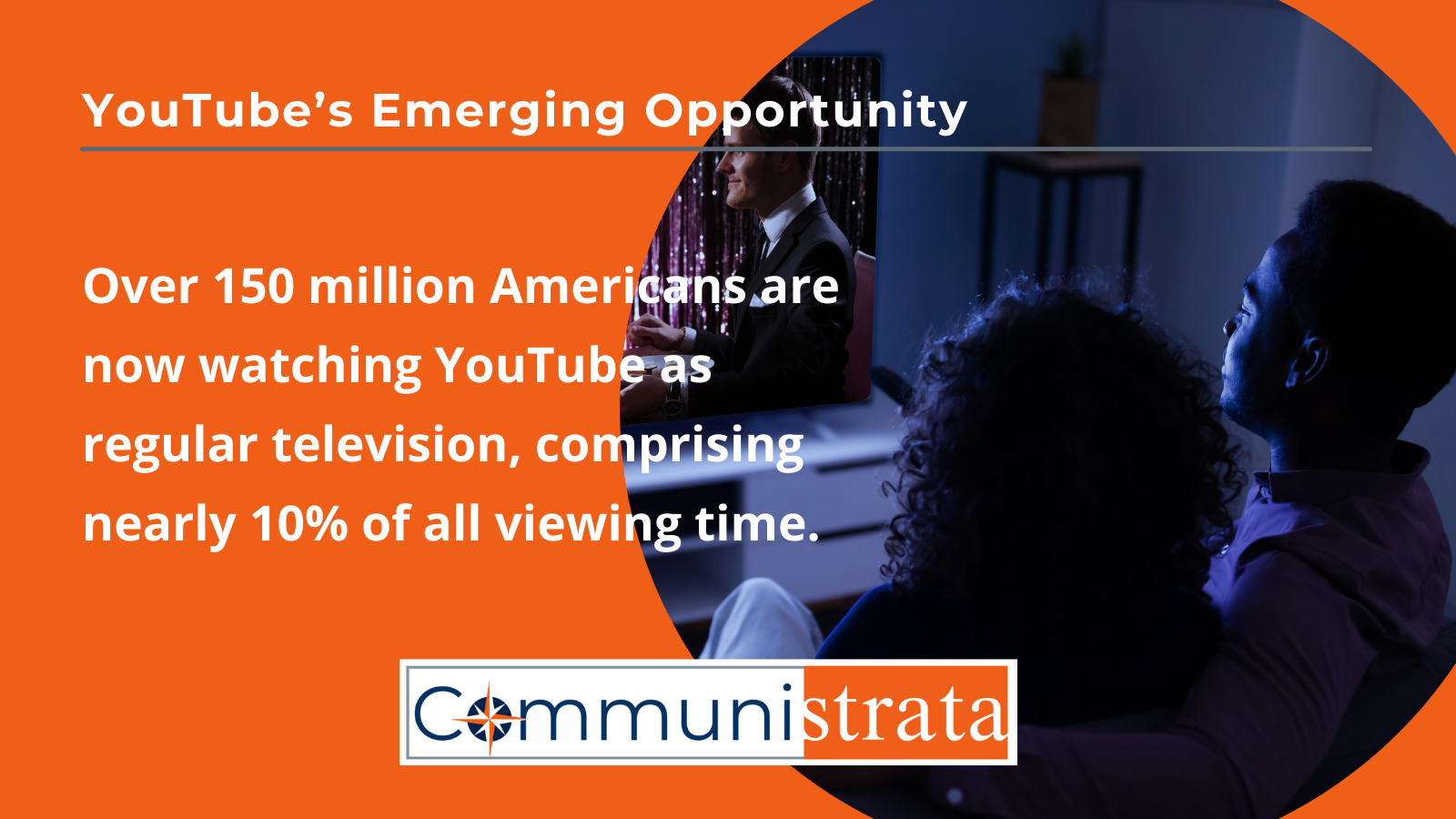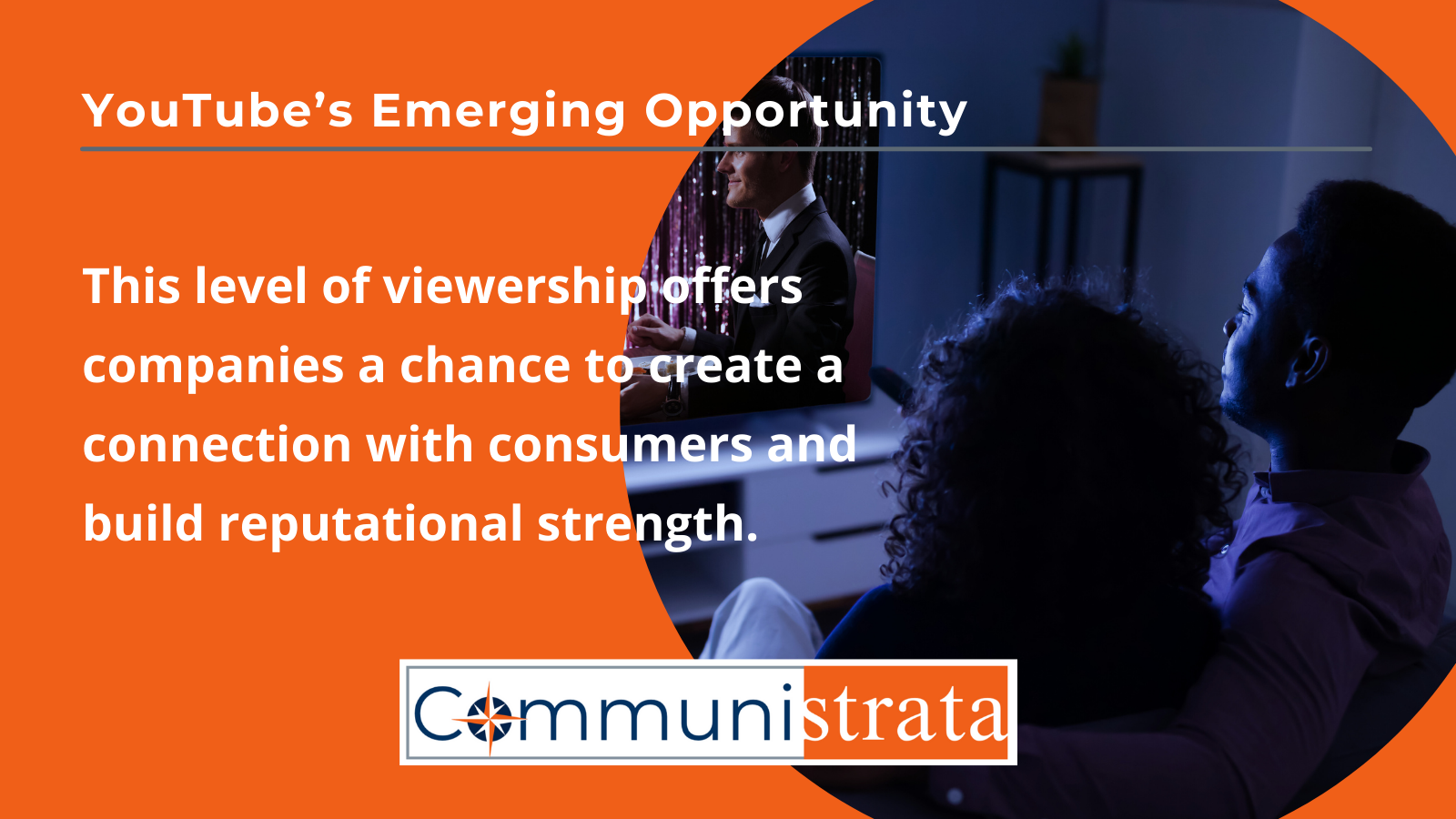Communicators Need to Rethink YouTube: Here's 150 Million Reasons Why
Founded in 2005, YouTube has long been thought of as the home of crazy stunts, beauty influencers, and how-to videos. It still is, but it’s become much more. A recent report by Nielson shows there’s an inherent opportunity for companies of all sizes to build consumer connections and reputational strength with a wide swath of the U.S. public.
People Are Watching YouTube as Regular TV Viewing
A brief report called "The Guage” from Nielson released in May has sent shock waves across the media industry. Nearly 10% of time spent viewing TV at home (actual TV’s not mobile devices) is now spent watching YouTube. In fact, the Wall Street Journal reports that 150 million people in the US, or 40% of the viewing population, watch YouTube on their connected TV’s regularly.
Graphic Credit: The Neilson Company, May 2024 See Article
Why is this happening? It’s a confluence of several factors. First, younger views in particular have been leading the “cord cutting” revolution that continues to down-trend cable television. Second, the quality of content being produced by creators is vastly higher than it was thanks to technology, competition, and incentives from YouTube. And third, the varied length and topics allow the audience a “choose your own adventure” experience in terms of the content they wish to consume. Control is with the viewer, not the streamer or network.
There’s An Opportunity to Build Reputation and Connection
There’s an opportunity here, but it’s more than a simple advertising play. Companies of all sizes, budgets, and experience can be creators building reputational strength with authentic, well-crafted and authentic stories about their organization. Communicators will need to avoid the temptation to lean towards an "advertorial" approach, but instead tell great stories though one or several leaders or employees the audience can get to know.
The ability to tell great stories using "characters" that represent your organization can create a powerful connection with your audience. This can be extremely valuable in fostering deeper relationships with your brand and building customer loyalty. Further, it can also be important should a crisis communications issue emerge, as your organization will have built up good will, meaning consumers and stakeholders are more likely to give the company space and support to correct a problem.
So where do you start?
· Identify Comparatives: Spend time on YouTube to identify brands or individuals that are creating the type of content you think will resonate with the your audience, and could be an example of what you’d like to develop. This is helpful not only to achieve clarity around content but to help producers understand your vision for the project.
· Take Inventory: It’s all about the story, and the characters (executives, employees, customers, etc.) featured. Take inventory of the potential stories you have to tell and match that concept against what’s working on YouTube. Focus on a people-first approach (versus brand-first) to invite people into your story.
· Create a Story Plan: When you have potential stories identified, consider how these might play out over time. How can you leverage this story in multiple episodes? Could you create an on-going series around this story or topic? Could you invite people to “get to know” characters from the story and feel connected with them?
· Consider Format: YouTube Shorts is the most popular format on YouTube. These are often 15 seconds or less in length. However, longer form videos are working on regular YouTube if the story is compelling and the visuals are well-produced (but still authentic). A number of major creators are currently experimenting with longer format videos.
· Build Long-Term: Creating a strong YouTube program is not a “one and done” deal. It needs to be built over time, so viewers feel like they are truly “getting to know” your organization through your online ambassadors. Develop or work a production team that fully understands your company, its values, and can tell a great story long term.
John Theriault is founder of Communistrata Strategic Communications.



